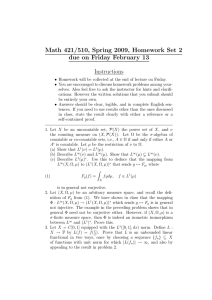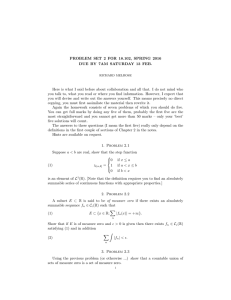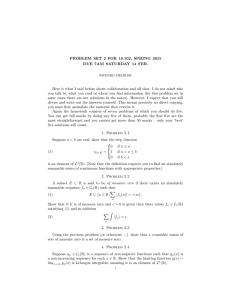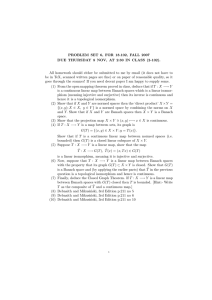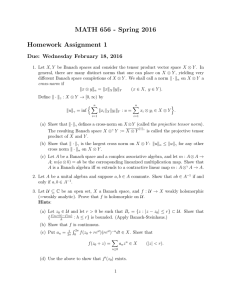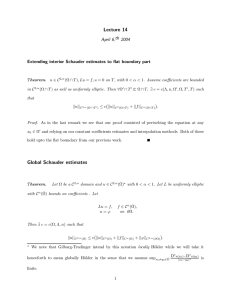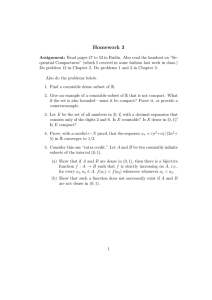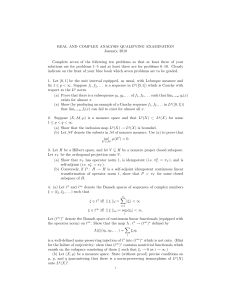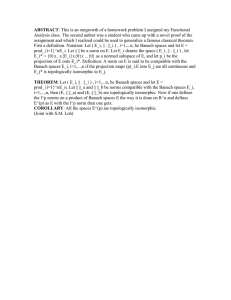PROBLEM SET 2, FOR 18.102, FALL 2007
advertisement
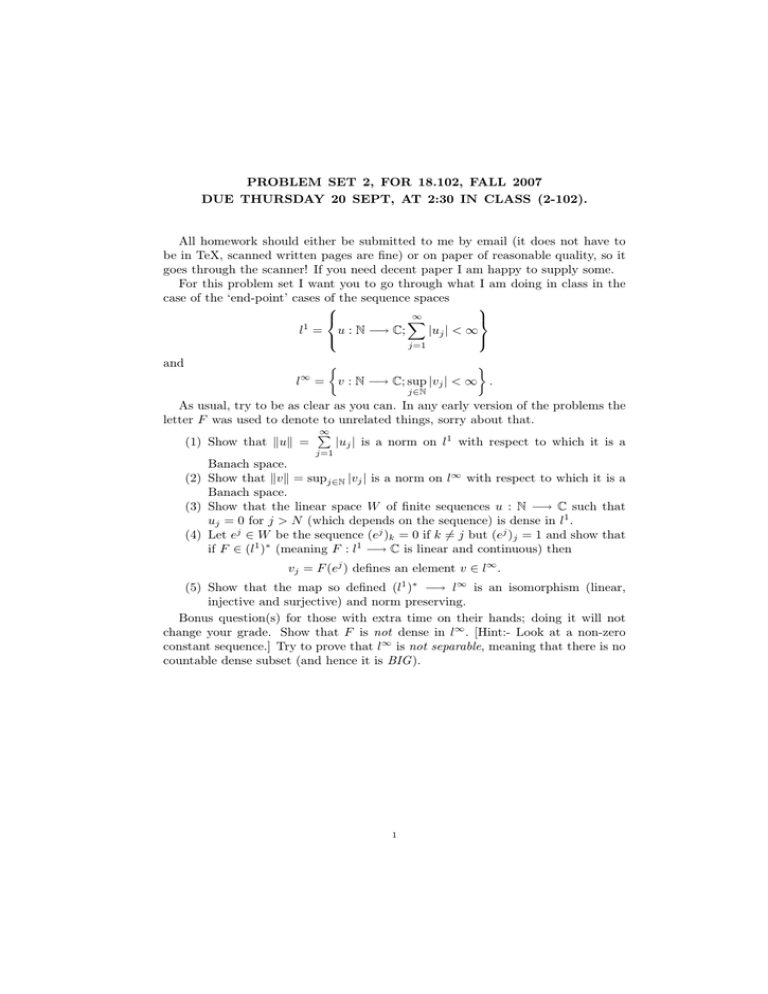
PROBLEM SET 2, FOR 18.102, FALL 2007 DUE THURSDAY 20 SEPT, AT 2:30 IN CLASS (2-102). All homework should either be submitted to me by email (it does not have to be in TeX, scanned written pages are fine) or on paper of reasonable quality, so it goes through the scanner! If you need decent paper I am happy to supply some. For this problem set I want you to go through what I am doing in class in the case of the ‘end-point’ cases of the sequence spaces ∞ X l1 = u : N −→ C; |uj | < ∞ j=1 and l∞ = v : N −→ C; sup |vj | < ∞ . j∈N As usual, try to be as clear as you can. In any early version of the problems the letter F was used to denote to unrelated things, sorry about that. ∞ P (1) Show that kuk = |uj | is a norm on l1 with respect to which it is a j=1 Banach space. (2) Show that kvk = supj∈N |vj | is a norm on l∞ with respect to which it is a Banach space. (3) Show that the linear space W of finite sequences u : N −→ C such that uj = 0 for j > N (which depends on the sequence) is dense in l1 . (4) Let ej ∈ W be the sequence (ej )k = 0 if k 6= j but (ej )j = 1 and show that if F ∈ (l1 )∗ (meaning F : l1 −→ C is linear and continuous) then vj = F (ej ) defines an element v ∈ l∞ . (5) Show that the map so defined (l1 )∗ −→ l∞ is an isomorphism (linear, injective and surjective) and norm preserving. Bonus question(s) for those with extra time on their hands; doing it will not change your grade. Show that F is not dense in l∞ . [Hint:- Look at a non-zero constant sequence.] Try to prove that l∞ is not separable, meaning that there is no countable dense subset (and hence it is BIG). 1
